We use affiliate links to run our site. When you buy through links on our site, we may earn an affiliate commission, without any added cost to you. Learn more
Are you looking to add some greenery to your home but are short on space? Look no further than vertical gardening! This allows you to grow plants vertically, making use of walls, trellises, and hanging baskets to create a stunning garden display in even the smallest of spaces.
Not only is it visually appealing, but it also comes with a range of benefits including improved air quality, reduced stress levels, and a boost in mood.
But before you start building your own vertical garden, it’s important to know which plants are best suited for this type of gardening. In this post, we’ll explore some of the top plants for vertical gardening and share tips on how to care for them.
So, let’s get started and elevate our gardening game!
How to Choose Plants for Vertical Gardening:
Choosing the right plants for your vertical garden can make all the difference in its success. Here are some factors to consider when selecting plants:
- Sunlight requirements: Make sure you choose plants that match the amount of sunlight your vertical garden will receive. Some plants, like tomatoes and peppers, need full sun, while others, like ferns and ivy, can thrive in shade.
- Watering needs: Vertical gardens can have different watering needs compared to traditional gardens. Plants that require less water, like succulents or cacti, are great options for vertical gardens.
- Soil type: Soil in vertical gardens can be more susceptible to drying out, so make sure to choose plants that are well-suited to the type of soil you’re using. Consider using a lightweight soil mix to ensure adequate drainage.
- Climate: The climate you live in will determine which plants are most suitable for your vertical garden. Some plants are more tolerant to extreme temperatures, while others thrive in more moderate climates.
- Size and weight of plants: Since vertical gardens are often supported by walls or other structures, it’s important to choose plants that won’t be too heavy for the support system. Smaller, lightweight plants like herbs or small flowers are a great option.
- Growth rate: Choose plants that won’t outgrow their allotted space too quickly. Slow-growing plants like succulents or herbs are ideal for vertical gardens.
By considering these factors, you can ensure that your vertical garden is populated with plants that will thrive and add beauty to your space.
Top Plants for Vertical Gardening
There are many excellent choices for vertical gardening, here are some of the best ones to consider:
Succulents:
Succulents are a great choice for vertical gardening as they require little water and can thrive in small spaces. They come in a variety of colors and textures, making them a versatile option for creating a visually appealing vertical garden.
Succulents also have shallow roots, making them ideal for containers and vertical gardens. They require good drainage and should be planted in a well-draining soil mix.
Herbs:
When it comes to herbs for vertical gardening, basil, parsley, thyme, mint, and rosemary are all popular and versatile choices. Let’s take a closer look at each one:
1. Basil:
This fragrant herb is a favorite in many cuisines and is easy to grow in a vertical garden. Basil loves sunlight and warmth, so make sure to place it in a sunny spot.
Pinch off the tops of the plant regularly to encourage new growth and prevent it from flowering too soon. Basil can be used fresh in salads and pasta dishes or dried for long-term storage.
2. Parsley:
This herb is often used as a garnish but can also be used in many dishes, from soups to sauces. Parsley prefers cool and moist conditions, so make sure to keep it well-watered.
It can take a bit longer to grow than some other herbs, but once it gets going, it can provide a steady supply of fresh leaves.
3. Thyme:
This herb has a distinctive flavor and aroma and is often used in Mediterranean cuisine. Thyme is a hardy herb that can handle drier conditions and doesn’t require much attention once it’s established. It also attracts pollinators like bees and butterflies to your garden.
4. Mint:
This refreshing herb is perfect for summer drinks, desserts, and even salads. Mint is a fast-growing herb that can quickly take over a garden, so make sure to plant it in a container or an area that can be easily contained. It prefers moist soil and can be harvested regularly to encourage new growth.
5. Rosemary:
This woody herb has a strong aroma and is often used in meat dishes and marinades. Rosemary prefers drier conditions and can handle direct sunlight, making it an ideal choice for a vertical garden. It’s also a hardy herb that can withstand colder temperatures.
Vegetables:
When it comes to choosing vegetables for your vertical garden, there are a few things to consider. You want to pick plants that are compact, have shallow root systems, and are easy to care for. Here are five great vegetable choices that are ideal for vertical gardens:
1. Tomatoes:

Tomatoes are a popular choice for vertical gardens because they can be trained to grow up a trellis or wall. There are also many compact varieties available that are perfect for small spaces. Tomatoes thrive in full sun, need to be watered regularly, and should be fertilized every two weeks.
2. Beans:
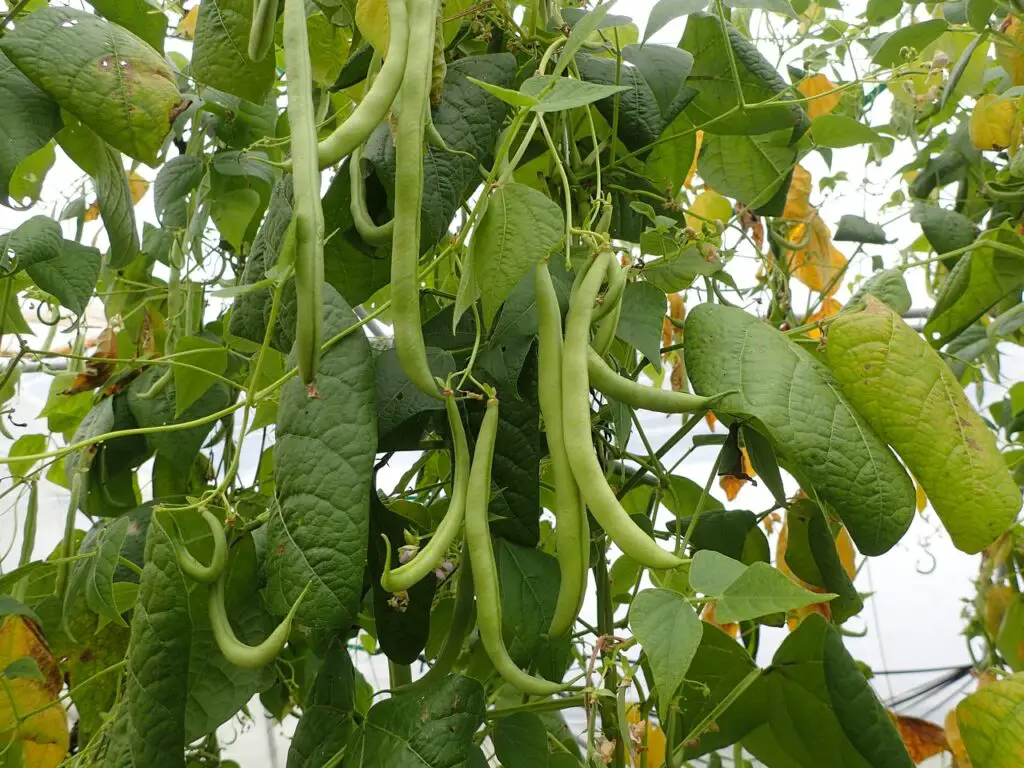
The bush form of beans does not grow well in vertical gardening. So if you are planning to do vertical gardening with beans, choose the pole variety. Its harvest can go on for several months.
You can also provide horizontal support for them. If used properly, you can prepare visually attractive structures by using bean plants.
3. Peppers:
Peppers are a great choice for a vertical garden because they are compact and can be grown in small spaces. They also come in a variety of colors and sizes, making them a fun addition to any garden. Peppers need full sun and should be watered regularly, but they don’t require a lot of fertilizer.
4. Cucumbers:
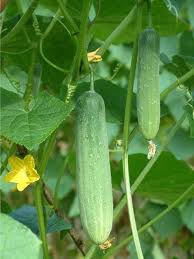
Cucumbers are a great choice for a vertical garden because they can be grown on a trellis or in a hanging basket. They prefer full sun and should be watered regularly, but they don’t require a lot of fertilizer. Cucumbers also grow quickly and produce a lot of fruit, so you can enjoy fresh cucumbers all season long.
There are several varieties of cucumbers available in the market. Most of the varieties grow well in the vertical garden. You need a strong trellis for holding the plant, as when the fruit grows larger, the pressure on the trellis will be much more than on some other plants like peas or beans.
Most of the time, they grow upright. Providing net or fencing material can be a good choice for providing support to the plant.
5. Peas:
Choose the variety that grows vertically well. Peas are generally cool-weather crops. As the fruit size is not heavy and plant tendrils are shorter in length, you can provide nets as a trellis.
Some varieties grow very high (such as 6 ft), so provide the trellis accordingly.
6. Squash:
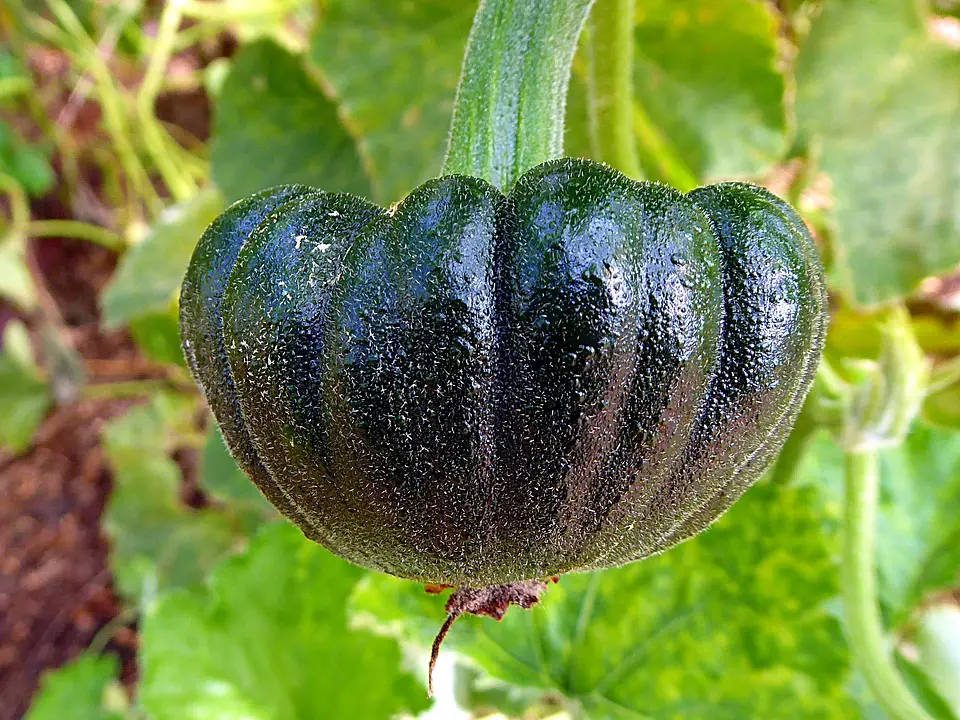
Generally, in gardens, squash is grown along the ground. This is not a problem if you have a lot of space for gardening, But like most urban gardeners you might lack space, so, vertical gardening can be a good choice for growing squash.
It will save a lot of space and will allow the light to reach every part of the fruit. It helps to prevent the fruit from rotting and also prevent diseases which cause due to a lack of the proper flow of air (like mildew).
Just keep in mind these fruits become very large in size so provide a proper strong trellis of fencing structure for support.
7. Strawberry:
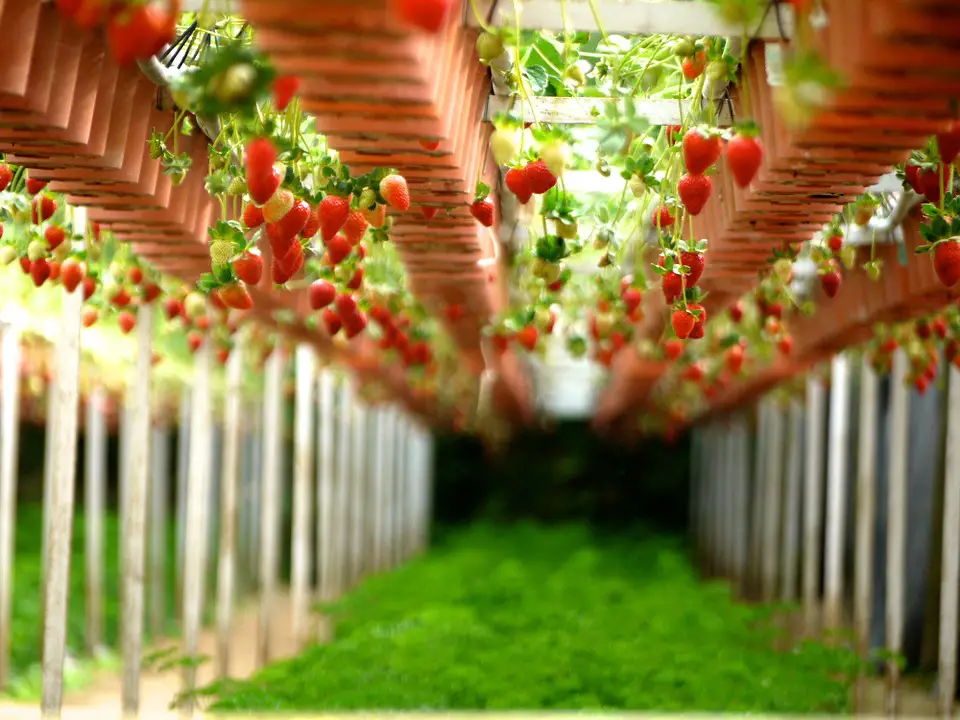
Strawberries do not have a deep root system. So they need additional support and hold on to vertical spaces for growth. This makes them ideal for vertical gardening. You can even grow them inside a PVC pipe.
Flowers:
Flowers are a great addition to any garden, including vertical gardens. They add color, and fragrance, and attract pollinators, making them an essential part of any outdoor space. Here are five flowering plants that are excellent choices for vertical gardens:
1. Petunias:
Petunias are a popular choice for vertical gardens because of their vibrant colors and ability to bloom throughout the summer. They are low-maintenance and can tolerate both sun and partial shade. They also attract hummingbirds and butterflies, making them a great choice for pollinator-friendly gardens.
2. Begonias:
Begonias are another great choice for vertical gardens. They come in a variety of colors and sizes and can thrive in partial shade or full sun. They are also low-maintenance and can tolerate a range of temperatures. Begonias are great for adding color to shady areas of your vertical garden.
3. Impatiens:
Impatiens are a great choice for those looking to add some color to their vertical garden in shady areas. They are low-maintenance and bloom throughout the summer. They also attract pollinators and are available in a range of colors.
4. Nasturtiums:
Nasturtiums are an excellent choice for vertical gardens as they are easy to grow and care for. They can thrive in full sun or partial shade and come in a variety of colors. Nasturtiums are also edible, and their leaves and flowers can be used in salads.
5. Marigolds:

Marigolds are a popular choice for vertical gardens as they can help deter pests and insects from your plants. They are low-maintenance and can thrive in full sun or partial shade. Marigolds are also available in a variety of colors and can add a pop of color to your vertical garden.
Overall, these five flowering plants are great choices for vertical gardens. They are low-maintenance, attract pollinators, and can add color and beauty to your outdoor space.
Techniques for Vertical Gardening
There are several techniques you can use for vertical gardening:
- Trellises
- Wall-mounted planters
- Hanging baskets
- Tower planters
- Pocket planters
Each technique has its own benefits and drawbacks, so choose the one that works best for your space, needs, and plants.
For example, trellises work well for climbing plants like cucumbers and tomatoes, while tower planters are great for small spaces and herbs.
Wall-mounted planters are perfect for flowers and trailing plants, and hanging baskets can add a pop of color to any space.
Pocket planters are an innovative way to utilize small areas and can be used for a variety of plants.
Conclusion:
Congratulations, you are now equipped with the knowledge to start your own vertical garden! Remember to consider the factors when choosing the right plants and techniques for your space. Whether you have a small balcony or a big backyard, vertical gardening can provide numerous benefits, including fresh produce, beautiful flowers, and a unique addition to your decor.
I hope You like the post. Why not share this with your friends and family who are also interested in vertical gardening? And be sure to explore more exciting posts on our site for additional tips, tricks, and inspiration to help you take your gardening skills to the next level.
Do I need special equipment to create a vertical garden?
No, you can create a vertical garden using a variety of containers, including hanging baskets and wall planters.
Can I grow fruit in a vertical garden?
Yes, fruits such as strawberries can be grown in a vertical garden.
Are vertical gardens difficult to maintain?
No, vertical gardens are relatively easy to maintain, as long as you choose the right plants for your space and provide them with the proper care.
How do I water a vertical garden?
You can water a vertical garden using a watering can or hose, or you can install a drip irrigation system.
Can I use a vertical garden to create privacy?
Yes, a vertical garden can be a great way to create privacy and block out unwanted views.
Amazon and the Amazon logo are trademarks of Amazon.com, Inc, or its affiliates.
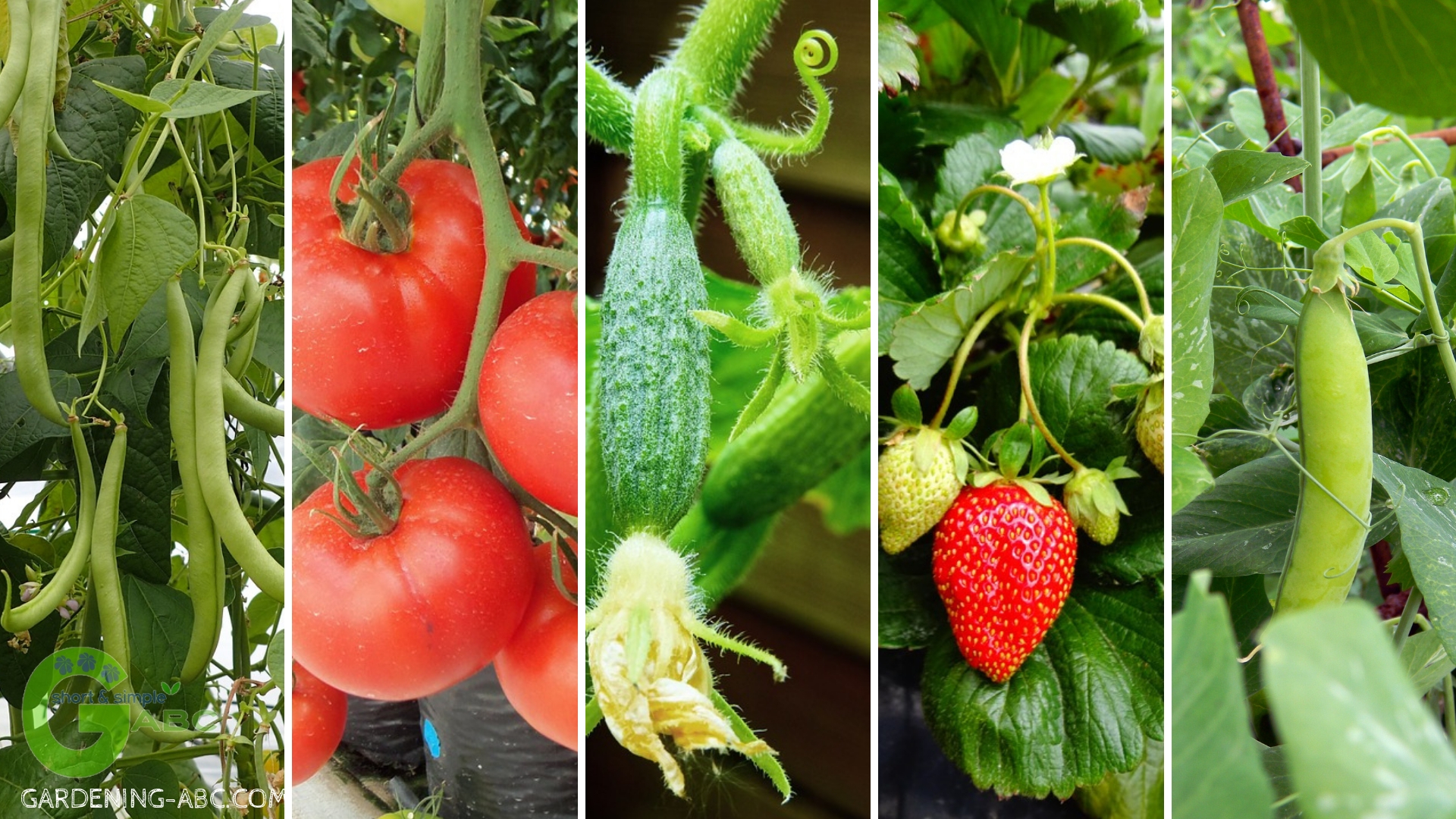
My first attempt at a garden wasgreat. My neighbors garden was thriving much better than mine. I wanted a ripe tomato so bad. One day I came home from work and my neighbor kept telling me to inspect the garden and I kept saying that I had to get the kids fed but he insisted I go and look so I did. I screamed outloud when I saw my first red juicy tomato and was so proud until I went to pick it. It was hung with string paper clips etc. The old Man played a trick on me. Johney was one of the best . Just loved him to death.